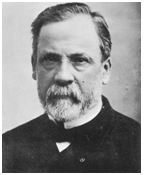While the issue of spontaneous generation lasted as at the time, some other scientist like Girolamo Fracastoro was interested about the transmission of the disease caused by these microorganisms. Girolamo Fracastoro was an Italian scientist, a poet and scholar in mathematics, astronomer and geography, and who in 1546 proposed that epidemic diseases are caused by transferable tiny particles or spores (that does not necessarily need to be living entities but chemicals) that could transmit infection by direct or indirect contact or even without contact over long distances.
His work led to the use of the term “fomites” in medicine, a phrase he used to describe things like clothes and linen, which although not themselves infected or polluted, but can nevertheless promote the essential seeds of the contagion and thus cause infection in humans who come in contact with these infected clothes or linen generally known as fomites.
Fomites are non-living vehicles (e.g. water, tables, chairs and food) that help to transmit infectious agents and/or diseases to susceptible human or animal hosts. Girolamo had the concept that “contagion is an infection that passes from one thing to another”, and he recognized three phases or forms of this passage as contact, air and lifeless objects or fomites.
His idea received credibility that microorganisms were the substance of contagion, and his theory remained influential for nearly three centuries, before being displaced by germ theory. Contagion was the term used by Girolamo when referring to pathogenic microorganisms.
References
Barrett J.T (1998). Microbiology and Immunology Concepts. Philadelphia, PA: Lippincott-Raven Publishers. USA.
Beck R.W (2000). A chronology of microbiology in historical context. Washington, D.C.: ASM Press.
Brooks G.F., Butel J.S and Morse S.A (2004). Medical Microbiology, 23rd edition. McGraw Hill Publishers. USA. Pp. 248-260.
Chung K.T, Stevens Jr., S.E and Ferris D.H (1995). A chronology of events and pioneers of microbiology. SIM News, 45(1):3–13.
Talaro, Kathleen P (2005). Foundations in Microbiology. 5th edition. McGraw-Hill Companies Inc., New York, USA.
Wainwright M (2003). An Alternative View of the Early History of Microbiology. Advances in applied microbiology. Advances in Applied Microbiology, 52:333–355.
Willey J.M, Sherwood L.M and Woolverton C.J (2008). Harley and Klein’s Microbiology. 7th ed. McGraw-Hill Higher Education, USA.
Discover more from Microbiology Class
Subscribe to get the latest posts sent to your email.





